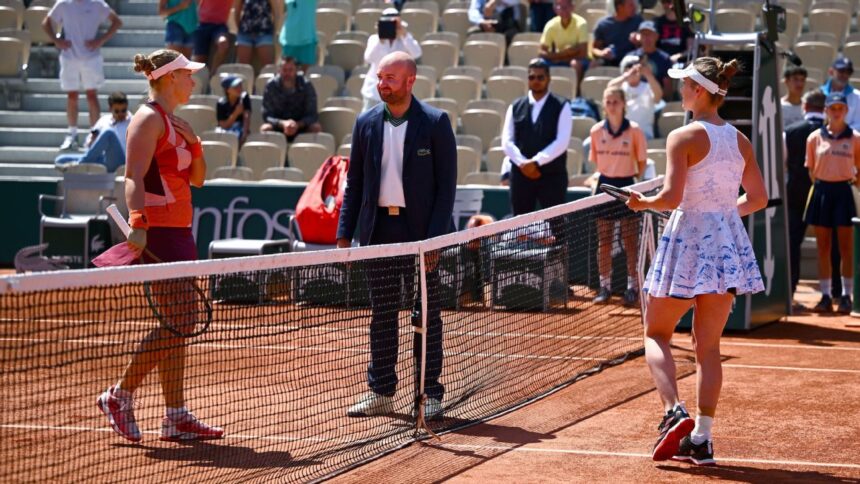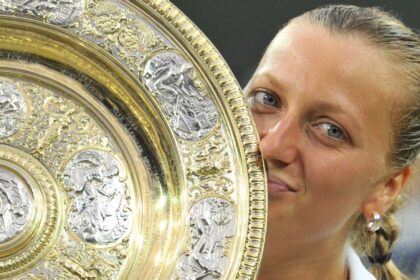In tennis, simplicity endures in an ancestral ritual: the coin toss. This act, which decides who starts the serve and on which side of the court the player will be located, remains fundamental in most tournaments, despite digitalization in some events.
Serve or Subtract? The Strategy Behind the Choice
According to the book “Winning Ugly” by Brad Gilbert, the choice to receive, that is, to receive the serve, is a smart decision from a psychological point of view. Gilbert, former world number 4 and coach of figures such as Andre Agassi, Andy Roddick and Coco Gauff, argues that if a player chooses to serve and loses their serve, they start at a disadvantage. On the other hand, if they choose to receive and do not lose their serve, they maintain an initial game without conceding ground.
Various factors influence this choice: weather conditions, the opponent’s playing style, the court surface, and the player’s physical condition. Some players prefer to choose the side of the court rather than deciding whether to serve or receive.
At the beginning of my career, although I liked my chances when serving, I relied more on the return. So, if I won the toss, I always chose to return.
Novak Djokovic
Novak Djokovic, for example, has modified his strategy over the years. At the beginning of his career, he preferred to return, but in the last decade he has chosen to serve first. He believes that this sets the tone of the match and sends a message of confidence to the opponent. Although he recognizes that he can sometimes lose his first service game, he still values this choice for its impact on confidence and communication.

British player Jodie Burrage describes the coin toss as a topic of debate among tennis players. She generally chooses to receive, believing it gives her time to adjust to the match and, if her opponent starts slowly, she can take advantage from the beginning.
Players with a good serve, like Djokovic, often prefer to serve first, hoping to hold their serve and break their opponent’s quickly to take an early 3-0 lead. Stefanos Tsitsipas, for his part, adapts his strategy according to the opponent and his own performance. Although he prefers to serve, he considers his rival’s attitude and his own return game to make the decision. Tsitsipas does not believe that this choice determines the outcome of the match, but he recognizes that serving first can increase the chances of gaining an advantage on the scoreboard.Statistical Analysis of the Elections
The analysis of the first two Grand Slams of the year reveals that, in the first round, most players who win the toss choose to receive. At the Australian Open, 43 players opted to receive and 21 to serve. In the men’s event, the proportion was similar, with 43 players receiving and 21 serving.
In this year’s Roland Garros, the figures were similar. In the men’s first round, 19 players served first (6 lost their serve) and 43 returned (6 broke serve). In the women’s category, 21 served first (11 lost their serve) and 41 returned (21 broke serve).As the tournament progresses, the proportion of players choosing to serve first approaches that of those opting to receive. In Australia, the figures were almost equal in rounds 2, 3, and 4. In Paris, equality was maintained in the second round, and although there were more men receiving in the third round, the difference was minimal in the fourth.
Some players with a powerful serve prefer to return, seeking to surprise their opponent. Others, like Aryna Sabalenka and Gauff, who have struggled with their serve, usually choose to serve first. Madison Keys, on the other hand, usually chooses to return, although she is flexible in her decision.

Sometimes I like to subtract because I think going out and serving first can generate nerves.
Madison Keys
Sam Stosur, former US Open champion, used to serve first in most of her matches. Daria Kasatkina and Alex de Minaur also tend to return to put pressure from the first game.
A less common strategy is to let the opponent choose, as Marin Cilic did in his first-round match against Flavio Cobolli at Roland Garros. In this case, Cobolli chose to receive serve, but Cilic held his serve. Jodie Burrage thinks this tactic would be disconcerting.









